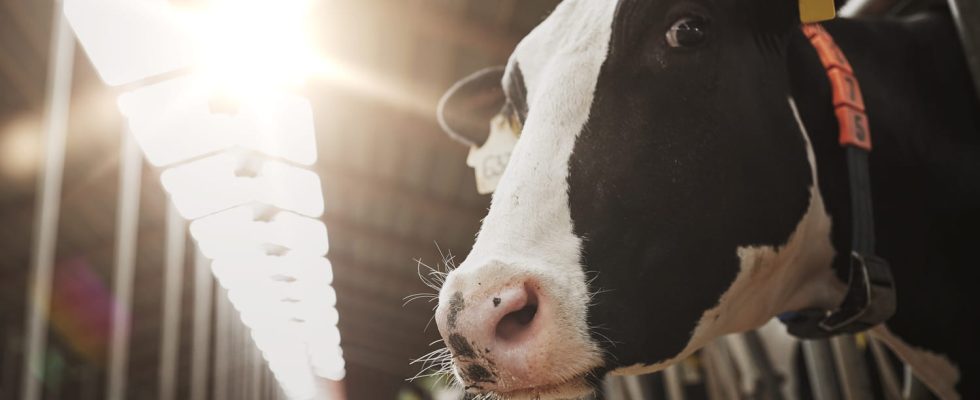New generation fields are starting to appear in the countryside and could soon multiply. Opponents cry “massacre of the landscape”…
In the small village of Brumath, in Bas-Rhin, the “Au Pays des fraises” farm becomes the scene of a national first which arouses as much hope as apprehension: the installation of an agrivoltaic park. This technology, still not widespread in France, makes it possible to continue to cultivate plants or graze animals under very high solar panels, 4 or 5 meters.
Rosalie Guth, co-owner of the farm with her sister, talks about on France 3 a rescue in the face of the vagaries of the climate which weighed down their last harvests. “We needed a solution,” she confides, testifying to positive contacts with the energy company BayWa re, in the Netherlands. The company plans to install around 1,440 panels over an area of 4,900 m2. The structure, made up of semi-transparent panels, will allow the passage of 49% of light while producing 464 megawatt hours (MWh) per year, the equivalent of the consumption of 100 homes.
This innovative technology is expected to spread on a large scale in the countryside and is already making a lot of noise in local media or in the specialized press. It must be said that Emmanuel Macron mentioned agrivoltaism on September 25 as one of the “additional income mechanisms, in response to the drop in agricultural yields”. More and more manufacturers are positioning themselves, attracting more and more farmers keen to “participate in the country’s energy transition” and find additional income. A farmer in Haute-Marne mentions a rent of 2,750 euros paid per hectare per year by one of these companies, Engie Green, for his park.
Huge surfaces mentioned
Voices are being raised against this appropriation of fields by energy companies, such as those of the Peasant Confederation. The President of Normandy Hervé Morin also announced on France Bleu recently that he will oppose any project in his region, citing “landscapes which will be absolutely massacred by fields of photovoltaic panels” and installations which will “reduce agricultural production and dairy production”.
The France Agrivoltaïsme association and the French Federation of Agrivoltaic Producers (FFPA) are trying to reassure. “The countryside will not be entirely covered with photovoltaic panels,” assures the organization, which mentions some 1,000 projects underway in France and fears, on the contrary, that they will be blocked by the new rules.
So how big will the phenomenon become? The objective of the 2023-2030 Multi-Annual Energy Program (PPE) is to increase these installations to reach 30,000 to 40,000 hectares. But recent legislation, with the law relating to the acceleration of renewable energies of March 10, 2023, still vague, causes uncertainty.
A decree must be issued at the end of the year to specify what agrivoltaism should be in France. The maximum coverage rate of a plot is particularly debated: the Young Farmers are demanding that this not exceed 20%, but the Ministry of Energy Transition wants to go up to 40%. Some organizations, such as Rural Coordination, even want to go up to 45%!
